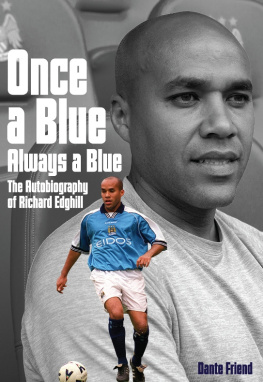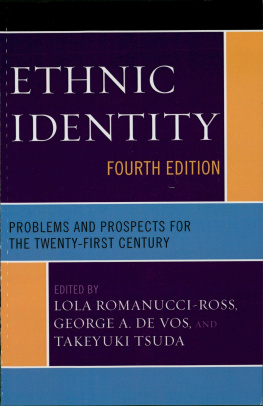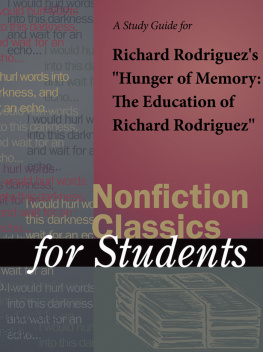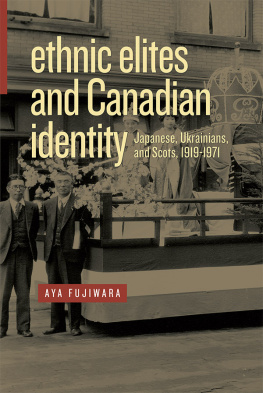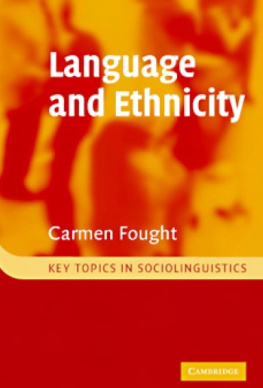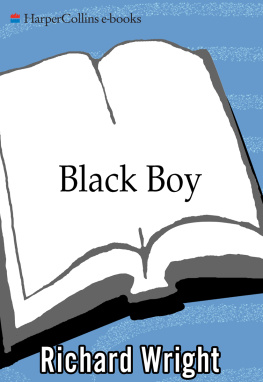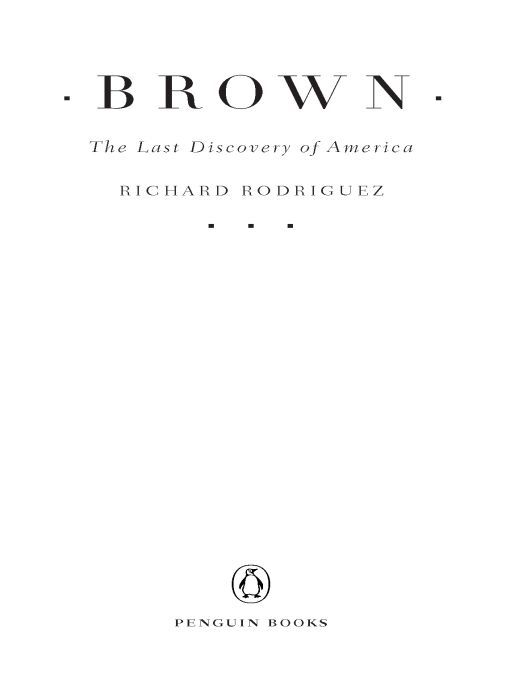Table of Contents
Praise for Brown and Richard Rodriguez
Rodriguez is an original thinker, an astute observer and an uncommonly gifted writer.
The Atlanta Journal-Constitution
As a writer Rodriguez has his own linguistic bravado, which strikes off images with the brio of a Shakespeare and the wicked humor of a political cartoonist.
Buffalo News
Challenging, eloquent, witty, and searingly beautiful.
Booklist
Brown provides a powerful argument for our need to re-imagine place and race alike as we enter this century.
Winston-Salem Journal
This book resonates with beautiful prose and such deep insight that it should be required reading for all those intrigued by our human condition.
New York Sun
Rodriguez offers the reader one of the most provocative and compelling descriptions of what he calls the browning of America. Accent magazine
Beautifully written and well-edited, Brown has matured from the raw juice of observation and become a rather fine wine. National Post (Canada)
The works in Brown are not neat little patterned exercises pointed toward a conclusion. Theyre chewy like Emersons; they pop with firecracker insights like D.H. Lawrences.
The San Jose Mercury News
PENGUIN BOOKS
BROWN
Richard Rodriguez works as an editor at the Pacific News Service in San Francisco and is a contributing editor for Harpers magazine and the Sunday Opinion section of the Los Angeles Times. He appears regularly as an essayist on the NewsHour with Jim Lehrer on PBS. He is the author of Hunger of Memory and Days of Obligations.
ALSO BY RICHARD RODRIGUEZ
Hunger of Memory: The Education of Richard Rodriguez
Days of Obligation: An Argument with My Mexican Father
For Jimmy, before the birds cry...
Preface
BROWN AS IMPURITY.
I write of a color that is not a singular color, not a strict recipe, not an expected result, but a color produced by careless desire, even by accident; by two or several. I write of blood that is blended. I write of brown as complete freedom of substance and narrative. I extol impurity.
I eulogize a literature that is suffused with brown, with allusion, irony, parodoxha!pleasure.
I write about race in America in hopes of undermining the notion of race in America.
Brown bleeds through the straight line, unstaunchablethe line separating black from white, for example. Brown confuses. Brown forms at the border of contradiction (the ability of language to express two or several things at once, the ability of bodies to experience two or several things at once).
It is that brown faculty I uphold by attempting to write brownly. And I defy anyone who tries to unblend me or to say what is appropriate to my voice.
You will often find brown in this book as the cement between leaves of paradox.
You may not want paradox in a book. In which case, you had better seek a pure author.
Brown is the color most people in the United States associate with Latin America.
Apart from stool sample, there is no browner smear in the American imagination than the Rio Grande. No adjective has attached itself more often to the Mexican in America than dirtywhich I assume gropes toward the simile dirt-like, indicating dense concentrations of melanin.
I am dirty, all right. In Latin America, what makes me brown is that I am made of the conquistador and the Indian. My brown is a reminder of conflict.
And of reconciliation.
In my own mind, what makes me brown in the United States is that I am Richard Rodriguez. My baptismal name and my surname marry England and Spain, Renaissance rivals.
North of the U.S.-Mexico border, brown appears as the color of the future. The adjective accelerates, becomes a verb: America is browning. South of the border, brown sinks back into time. Brown is time.
In middle chapters, I discuss the ways Hispanics brown an America that traditionally has chosen to describe itself as black-and-white. I salute Richard Nixon, the dark father of Hispanicity. But my Hispanic chapters, as I think of themthe chapters I originally supposed were going to appear first in this bookgave way to more elementary considerations. I mean the meeting of the Indian, the African, and the European in colonial America. Red. Black. White. The founding palette.
Some months ago, a renowned American sociologist predicted to me that Hispanics will become the new Italians of the United States. (What the Sicilian had been for nineteenth-century America, the Colombian would become for the twenty-first century.)
His prediction seems to me insufficient because it does not account for the influence of Hispanics on the geography of the American imagination. Because of Hispanics, Americans are coming to see the United States in terms of a latitudinal vector, in terms of south-north, hot-cold; a new way of placing ourselves in the twenty-first century.
America has traditionally chosen to describe itself as an east-west country. I grew up on the east-west map of America, facing east. I no longer find myself so easily on that map. In middle age (also brown, its mixture of loss and capture), I end up on the shore where Sir Francis Drake first stepped onto California. I look toward Asia.
As much as I celebrate the browning of America (and I do), I do not propose an easy optimism. The books last chapter was completed before the events of September 11, 2001, and now will never be complete. The chapter describes the combustible dangers of brown; the chapter annotates the tragedies it anticipated.
I think brown marks a reunion of peoples, an end to ancient wanderings. Rival cultures and creeds conspire with Spring to create children of a beauty, perhaps of a harmony, previously unknown. Or long forgotten. Even so, the terrorist and the skinhead dream in solitude of purity and of the straight line because they fear a future that does not isolate them. In a brown future, the most dangerous actor might likely be the cosmopolite, conversant in alternate currents, literatures, computer programs. The cosmopolite may come to hate his brownness, his facility, his indistinction, his mixture; the cosmopolite may yearn for a thorough religion, ideology, or tribe.
Many days, I left my book to wander the city, to discover the city outside my book was comically browning. Walking down Fillmore Street one afternoon, I was enjoying the smell of salt, the brindled pigeons, brindled light, when a conversation overtook me, parted around me, just as I passed the bird-store window: Two girls. Perhaps sixteen. White, Anglo, whatever. Tottering on their silly shoes. Talking of boys. The one girl saying to the other: ... His complexion is so cool, this sort of lightwell, not that light...
I realized my book will never be equal to the play of the young.
... Sort of reddish brown, you know... The other girl nodded, readily indicated that she did know. But still Connoisseur Number One sought to bag her simile.... Like a Sugar Daddy baryou know that candy bar?
Two decades ago, I wrote Hunger of Memory,



